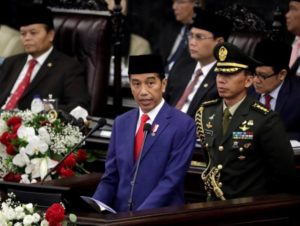Jakarta, mina –The International Monetary Fund’s (IMF) mission chief for Indonesia, Luis E Breuer, has said favorable demographic trends provide a unique window of opportunity for economic growth, Antra News reported.
“In particular, the number of workers is growing faster than the number of dependents, a demographic dividend that has provided strong tailwinds to growth and productivity in many other countries,” Breuer said in a discussion here on Wednesday.
He said the demographic trends were expected to increase Indonesia`s annual real GDP growth by close to 1 percentage point during 2020-2050.
This boost was substantial and positioned the country relatively well compared with peers in Asia, many of which were set to endure a reduction of real GDP growth as a result of adverse demographic trends. Indonesia was among a few comparable Asian countries set to benefit from a boost to GDP per capita owing to favorable demographics.
Also Read: Saudi Arabia Wins Bid to Host World Expo 2030
McKinsey and Company estimated that Indonesia`s consumer class could grow by 90 million by 2030. Such an increase would represent the third-largest expansion of consumers in the world (after China and India), providing unique economic opportunities.
Population growth,
As for population growth, urbanisation has been rapid in recent decades. The urban population grew at 3 per cent a year during 2000-2016, while the rural population declined by 0.2 per cent.
Also Read: 148 Products from Indonesia Promoted at Sarawat Superstore Jeddah
The labour force was projected to increase substantially. Indonesia was undergoing a demographic transition with a sizable decline in infant mortality and a reduction in fertility rates.
This had led to an increase in the working-age population, defined as persons 15 to 64 years old, of 1.6 per cent or 2.5 million people a year during 2000-2016.
Indonesia`s population continued to expand rapidly. It grew at 1.3 per cent a year on average during 2000-2016, reaching about 261 million in 2016.
The fertility rate, currently at 2.4 children per women, while declining was projected to remain above the replacement rate of 2.1 children per women until 2030.
Also Read: Packaging Industry Supports Halal Ecosystem
As a consequence, despite a declining trend in the population growth rate, the total population was projected to reach 296 million by 2030, also supported by a marked improvement in life expectancy. (T/RS5/RS1)
Mi’raj Islamic News Agency (MINA)
Also Read: Indonesia-Japan Agree on Energy Transition Cooperation



































 Mina Indonesia
Mina Indonesia Mina Arabic
Mina Arabic